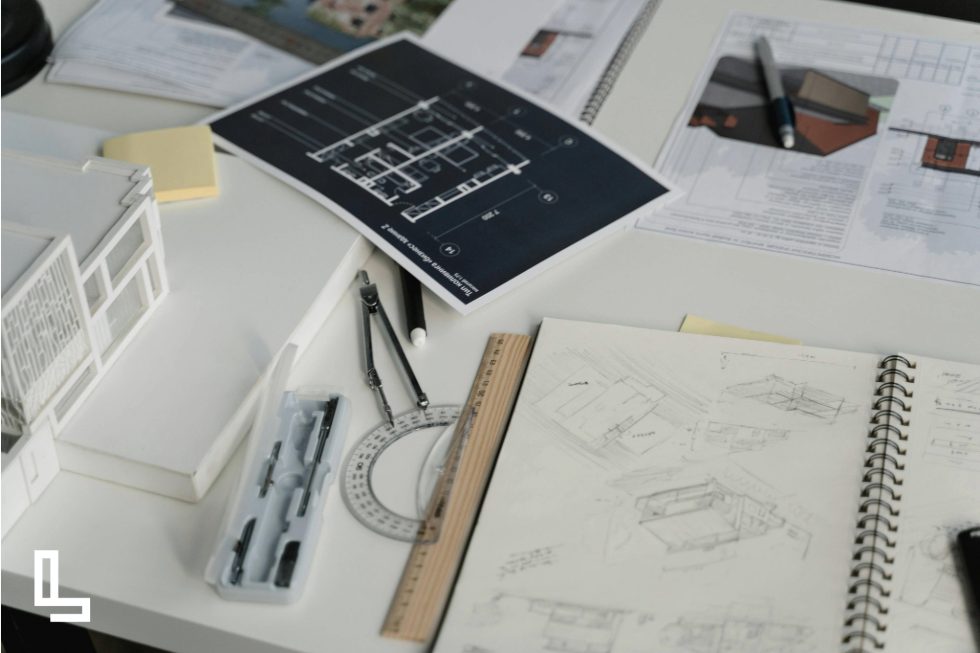The BIM Workflow Wake-Up Call: From Chaos to Organized Design
If you’re sick of wasting time flip-flopping between programs, let’s talk about why it’s happening in the first place. Every project follows the same exhausting pattern: AutoCAD for plans, SketchUp for quick 3D, Photoshop for presentations, Lumion for renders. Then back to AutoCAD when something changes. Each program holds a piece of the puzzle, but nothing talks to anything else. One design update means two hours making sure it shows up everywhere it needs to.
The absurdity becomes clear during deadline crunches. A simple door change—just switching from single to double doors—can take up an entire afternoon. Update the plan. Rebuild in 3D. Adjust the render. Fix the schedule. Update the elevation. Then check everything twice because you can’t remember what’s already been changed.
Three hours for a door change. Not a complex curtain wall system or a structural modification. Doors.
Most architects use Revit like it’s just AutoCAD with a 3D view—same disconnected workflow, fancier interface. The parametric intelligence that everyone talks about? The automated coordination? It sits there unused. This powerful integrated system gets treated like separate programs that happen to share a file format; that’s exactly where the chaos comes from.

BIM
The BIM Revelation That Changed Everything
Think about that for a second. No manual updates. Not “remember to change this in four other places.” Automatic, intelligent updates that ripple through your documentation and visualization simultaneously.
Most of us never learn to harness this power because we’re taught software in isolation. We take a Revit course here, a Lumion tutorial there, maybe throw in some Photoshop training for good measure. Nobody teaches us how to make them work together as a coordinated system.
The Gap Nobody Talks About
I’ve watched dozens of architectural visualization courses online and spent thousands on training programs. You know what 99% of them have in common? They teach you software features, not workflow integration.
They’ll show you every button in Revit. Demonstrate each rendering setting in Lumion. Walk through all the tools and commands until you can recite them in your sleep. But coordination between programs? That mysterious space where the real efficiency lives? Crickets.
It’s like learning to cook by studying each ingredient individually—here’s how salt works, here’s what butter does—but never learning how to prepare a meal. You end up knowing all the parts but missing the whole.
This education gap isn’t accidental. Most instructors learned the same fragmented way and are just passing along what they know. They’re teaching software, not systems. Features, not workflows. And while you’re getting technically proficient, you’re not getting professionally efficient.
We end up technically capable but procedurally handicapped. You can model anything, render anything, and document anything. It just takes you three times longer than it should, and nothing quite syncs up accurately.
The Discovery That Unlocked Real Efficiency
Setting up views in Revit specifically for Lumion export changes everything. Not just standard 3D views. Not the default settings everyone uses. Purpose-built views configured with the right visual styles, material representations, and element visibility, specifically designed to translate perfectly into Lumion.
This might sound like a minor detail, but it’s not. It’s the difference between a smooth import where materials map correctly and spending hours reassigning textures. It’s the difference between clean geometry and a mess of surface fragments. It’s the difference between working late and going home on time.
When these export views are set up correctly, the Revit model doesn’t just transfer to Lumion. It arrives ready to render. Materials recognize their Lumion counterparts. Geometry comes in clean. Updates sync without breaking material assignments.
The real power is once you understand how to set up this coordination, you can apply the same thinking to your entire workflow. Sections display properly. Schedules update automatically. Sheets coordinate with the model. Everything starts talking to everything else. The whole system becomes intelligent rather than just a collection of disconnected files.

The Real Impact of Integrated Workflows
Once I implemented integrated workflows, the efficiency gains were immediate. Complete packages—documentation AND visualization—took half the time. Coordination errors that used to eat up hours of checking and rechecking? Gone. The constant anxiety of whether my renderings matched my construction documents? Eliminated entirely.
When you can deliver coordinated work where everything actually matches, where updates don’t break your renderings, where you’re not scrambling to sync multiple files—you become infinitely more valuable. Not because you suddenly became a better designer, but because you can actually execute your designs efficiently.
The shift from constantly putting out fires to actually leading design decisions happens naturally when you’re not drowning in technical chaos.
One Model to Rule Them All
My workflow now looks like one coordinated model instead of multiple misaligned versions.
Everything lives in a single Revit file that’s properly structured from day one. Walls carry embedded information about materials, fire ratings, and acoustic properties. Windows know their manufacturers, sizes, and energy performance. Floors understand their finishes, thicknesses, and structural requirements.
This isn’t about over-modeling or adding unnecessary detail. It’s about smart modeling—building in the information you’ll need downstream so you don’t have to add it manually later.
When it’s time to render, I don’t export and start from scratch in Lumion. The model arrives with its intelligence intact. Materials map automatically. Updates flow seamlessly. What used to be a process of reconstruction becomes a process of refinement.
The psychological shift is just as important as the technical one. Instead of dreading coordination, I look forward to design development. Instead of avoiding changes, I embrace them because I know the model can handle it. Instead of working defensively—protecting against errors—I work creatively, knowing the system has my back.
What Getting Your Evenings Back Actually Looks Like
Here what changes when you implement a coordinated workflow. First, you stop working until 3am. When your model is properly coordinated, when changes flow automatically from documentation to visualization, you literally reclaim 15-20 hours every week. That’s like getting back two full working days.
But the ripple effects go even deeper. You stop outsourcing renderings because you can produce them efficiently in-house, saving thousands of dollars every month. You deliver better presentations because your visuals actually match your documentation. You take on more interesting projects because you’re not drowning in coordination chaos.
And most importantly, you remember why you became an architect in the first place. When you’re not exhausted from technical firefighting, you can actually focus on design. You can be creative. You can take that Thursday evening pottery class, coach your kid’s soccer team, or just sit on your porch with a book—revolutionary concepts, I know.

Your Career Trajectory Starts with Your Workflow
If you’re reading this at your desk, surrounded by multiple monitors showing different programs, feeling that familiar dread of coordination ahead, know that it doesn’t have to be this way.
The chaos isn’t your fault. Nobody taught us integrated workflows in school. Most firms don’t have time to develop proper training. And the software companies? They’re too busy selling you the next feature update to teach you how to use what you already have.
But once you understand how to build coordinated models, how to set up proper parametric connections, how to configure your views for seamless export—everything changes. You stop being the person who executes and become the person who delivers. You stop supporting and start leading.
Ready to Transform Your Career Trajectory?
My Design, Document, and Render Course isn’t just another software tutorial. It’s a complete workflow transformation that teaches you exactly how to create coordinated models that work across platforms.
You’ll learn the specific view settings, family configurations, and export procedures that turn BIM chaos into organized design. More importantly, you’ll understand the why behind each step, so you can adapt the system to your unique projects and requirements.
[Join the Design, Document, and Render Course Waitlist]
Stop letting technical limitations define your career ceiling. Stop watching others get promoted because they can deliver what you can’t. Stop treating BIM like a fancy modeling tool and start using it as the integrated powerhouse it was designed to be.
Your next promotion isn’t about working harder or longer. It’s about working smarter with systems that multiply your capability. The wake-up call already happened. Now it’s time to answer it.
Ready to break free from technical support roles? Join the waitlist for the Design, Document, and Render Course and learn the integrated workflows that transform careers. Stop coordinating manually. Start leading projects.


0 Comments